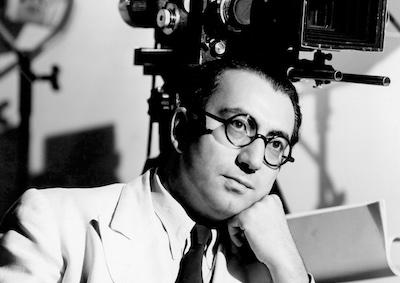Born in Tbilisi, Georgia in 1897, Rouben Mamoulian came to America in 1923 seeking a suitable outlet for his nascent aesthetic vision. Following in the footsteps of his mother, a director for the Armenian stage, Mamoulian had trained at the Moscow Stage Theater where naturalism was de rigeur, a style that the young director did not appreciate. “I discovered I had no affinity for naturalism on stage,” he later said. “My aim always was rhythm and poetic stylisation.” By 1927, Mamoulian had his first Broadway hit with Porgy which he conceived as “a truly dramatic theater… that would combine all the elements of movement, dancing, acting, music, singing, decor, lighting, color and so on.” Mamoulian soon ventured into Hollywood, with his first effort for Paramount, Applause (1929), hailed as a liberating leap forward for its imaginative combination of sound and camera movement. Mamoulian quickly earned a reputation as an innovator who could be trusted with a studio’s most valuable assets, whether Greta Garbo at MGM (Queen Christina, 1933) or three-color Technicolor at RKO (Becky Sharp, 1935). Throughout his career he remained a meticulous builder of worlds, to be taken in, for sure, but also to be moved through—whether waltzing (Love Me Tonight, 1932) or prowling (Dr. Jekyll and Mr Hyde, 1931). As critic Tom Milne suggested, every Mamoulian film could be considered a musical, “choreographed rather than directed.” The UCLA Film & Television Archive is proud to have restored eight films by the groundbreaking Armenian American director, including the two presented as part of this special Archive Treasures double feature.
Special thanks to our community partner: Armenian Film Foundation.
Applause
U.S., 1929
Rouben Mamoulian's Hollywood debut immediately validated Paramount's hope that the Broadway director, known for original use of sound on stage, would breathe new life into their sound film production. Set amid the bright, noisy, vulgar and entertaining realities of the burlesque world, Applause makes ample use of its environs to underscore the tragedy of Kitty Darling (Helen Morgan), an aging, alcoholic star trying to rebuild a relationship with April (Joan Peers), the daughter she sent to study at a convent years before. In a highly evocative example of Mamoulian’s approach to style and theme, April’s introduction to the ugliness of her mother’s world comes when she is verbally and physically accosted walking down a street alone at night, until a sailor, Tony (Henry Wadworth), comes to her rescue. The entire scene consists of a tracking shot of her legs and those of her assailants, their voices badgering her impressionistically from off-screen. Mamoulian and his cameraman, George Folsey, deploy such visual and aural inventiveness throughout in a tour de force of technical and artistic mastery that still stuns today.
35mm, b&w, 78 min. Director: Rouben Mamoulian. Screenwriter: Garrett Fort. Based on the play by Beth Brown. With: Helen Morgan, Joan Peers, Fuller Mellish, Jr., Jay Cameron, Henry Wadsworth.
Preservation funding provided by Universal Pictures and the University of California. Preserved by the UCLA Film & Television Archive from a 35mm nitrate print, in cooperation with Universal Pictures and Paramount Pictures. Laboratory services by Film Technology Company and YCM Laboratories.
Love Me Tonight
U.S., 1932
Love Me Tonight opens with one of the most dazzling and delightful sequences in cinema—modeled directly on the “Symphony of Noises” that opened Rouben Mamoulian’s stage adaptation of Porgy. Instead of Catfish Row, Charleston, South Carolina, it’s a sleepy Paris that awakens to an orchestration of everyday sounds—chiming church bells, the clanging of shutters, the rhythmic swoosh of a broom. So begins the enchanting tale of an amorous tailor (Maurice Chevalier) who woos a lovelorn princess (Jeanette MacDonald). Chevalier and MacDonald were two of Paramount's biggest stars entrusted to Mamoulian when Ernst Lubitsch was unavailable. With the help of songwriters Richard Rodgers and Lorenz Hart, Mamoulian brought his own distinctive touch to the project seamlessly integrating story, action and dialogue with their irresistible songs, including “Mimi,” which became one of Chevalier's signature tunes. Love Me Tonight brims with double entrendres, as Mamoulian has fun with some of his favorites themes: sex and seduction. With its wit and lyricism, inventive sound and camera work, Love Me Tonight is Mamoulian's masterpiece.
35mm, b&w, 89 min. Director: Rouben Mamoulian. Screenwriter: Samuel Hoffenstein, Waldemar Young, George Marion. Based on the play Le tailleur au château (The tailor in the castle) by Léopold Marchand and Paul Aumont. With: Maurice Chevalier, Jeanette MacDonald, Charlie Ruggles, Charles Butterworth, Myrna Loy.
Preservation funding provided by The Packard Humanities Institute. Preserved by the UCLA Film & Television Archive in cooperation with Universal Studios from 35mm acetate duplicate picture and soundtrack negatives. Laboratory services by YCM Laboratories. Sound services by Blue Wave. Special thanks to: Jay Jones, Robert O'Neil, David W. Packard, Tom Regal, Leon Smith.






 Mobile Navigation
Mobile Navigation

